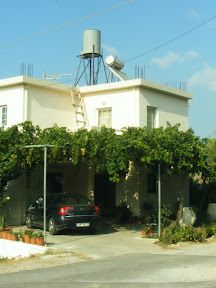Yesterday I saw Yael Parag from Oxford University present on a plan the UK is looking at for "personal carbon trading" (
Oxford description here). The UK, like lots of cities and countries, has all these grand plans for 30% reduction in Greenhouse gases by 2030 and 80% by 2050, but no real plans to accomplish this, and minimal progress. This cap-and-trade type of idea might be able to accomplish the goals. Here is how I understand the plan from the talk:
The UK is generating some amount CO2 each year. Of this, 40% is directly used by individuals in the form of non-business transportation, home heating, and home electricity. The rest is used by commerce, industry, and agriculture for similar purposes, plus manufacturing.
The presenter mentioned, though I can't find any reference of this on the website, that the 60% would be auctioned out to all non-individual users.
More interestingly, the 40% would be distributed evenly among all people. Each person would then have some monthly (or yearly) balance of Carbon. Whenever people buy things that
actually produce CO2 when used, they enter their Carbon card number, and their account is debited. An important point is that there wouldn't be that many of these transaction, since the only things counted would be
- Gasoline/diesel
- Monthly heating bill (gas/oil)
- Monthly electric bill
- Air travel
The carbon credits could of course be bought and sold, and I bet eBay would just be the beginning. I can see entire companies emerging to manage, loan, invest, and speculate on credits.
Although Fat Knowledge
prefers taxes to permits (and in general I do too), there are a few points that speak in favor of CO2 credits.
- Energy is a fairly inelastic commodity: that is, the demand is not especially affected by price. In summer 2008, gas prices rose something like 75% from the previous year, but vehicle miles traveled dropped just 5-10%.
- People respond to social norms. Just like the California electricity users who cut back consumption to be closer to that of their neighbors, Britons may alter their behavior to use closer to what the average citizen uses, for social norm reasons as well as economic.
- Caps are good for controlling things that should be, well, capped. Taxes are good for things that the government wants to discourage, but doesn't care if a specific amount are used. For instance, the high cigarette tax (in theory) reduces demand, but it doesn't limit the number sold. But if scientists say that the amount of CO2 generation shouldn't increase, it is difficult to estimate what tax level will accomplish this, whereas the cap dictates the amount and lets the demand set the price. And the amount of credits could slowly be ratcheted down to meet that level that the government/scientists believe is sustainable.
The system has the potential to work well. One concern I had was that people would chalk up all the driving they could as "business travel". But if the firms have to bid on carbon pounds, they might not want their employees using them up. And since many of the poor do not drive cars and live in smaller houses/apartments with smaller utility bills, they could earn extra income selling credits, making this a Progressive measure.
Nevertheless, I do have a few things I wonder about.
- If firms bid on credits, why is air travel counted for personal consumption? Wouldn't that count twice? Or maybe the system is set up so that the airline industry can pass on the credit use to consumers, rather than the cost of auctioned credits.
- Mass transit is not included (initially) to encourage use rather than cars, and because there is in general far more of these transactions a month, so it would be a pain to have to debit the carbon card every time. Would intercity buses and rail also be exempt, or would they pass on credit consumption like airlines?
- For electricity, would we use the average CO2/kwh of the entire country, or the local company's portfolio? Would (in the US) hydro-happy Washington's electricity not debit much, but a lot of points would come out for a kWh in King Coal states like Kentucky and West Virginia? And if, as you can do, you pay a premium to guarantee that your electric company buys at least your amount of kWh from Wind or whatever, would that make your electricity free of credits?
- Should credit allowance be based on the household? Or is the individual better? How should children be counted? Should you be able to merge accounts, so one family member isn't stuck somewhere unable to buy gas while the other has a surplus? And how much would this complicate divorces? (No, those carbon credits should go to me!)
The government still gets some revenue from the non-residential credits permit sales. But this would certainly be
much more complicated than a tax. And would people trust the big bad government to have so much control of people? Would it be better if the system was administered by a big bad corporation? Any thoughts?













